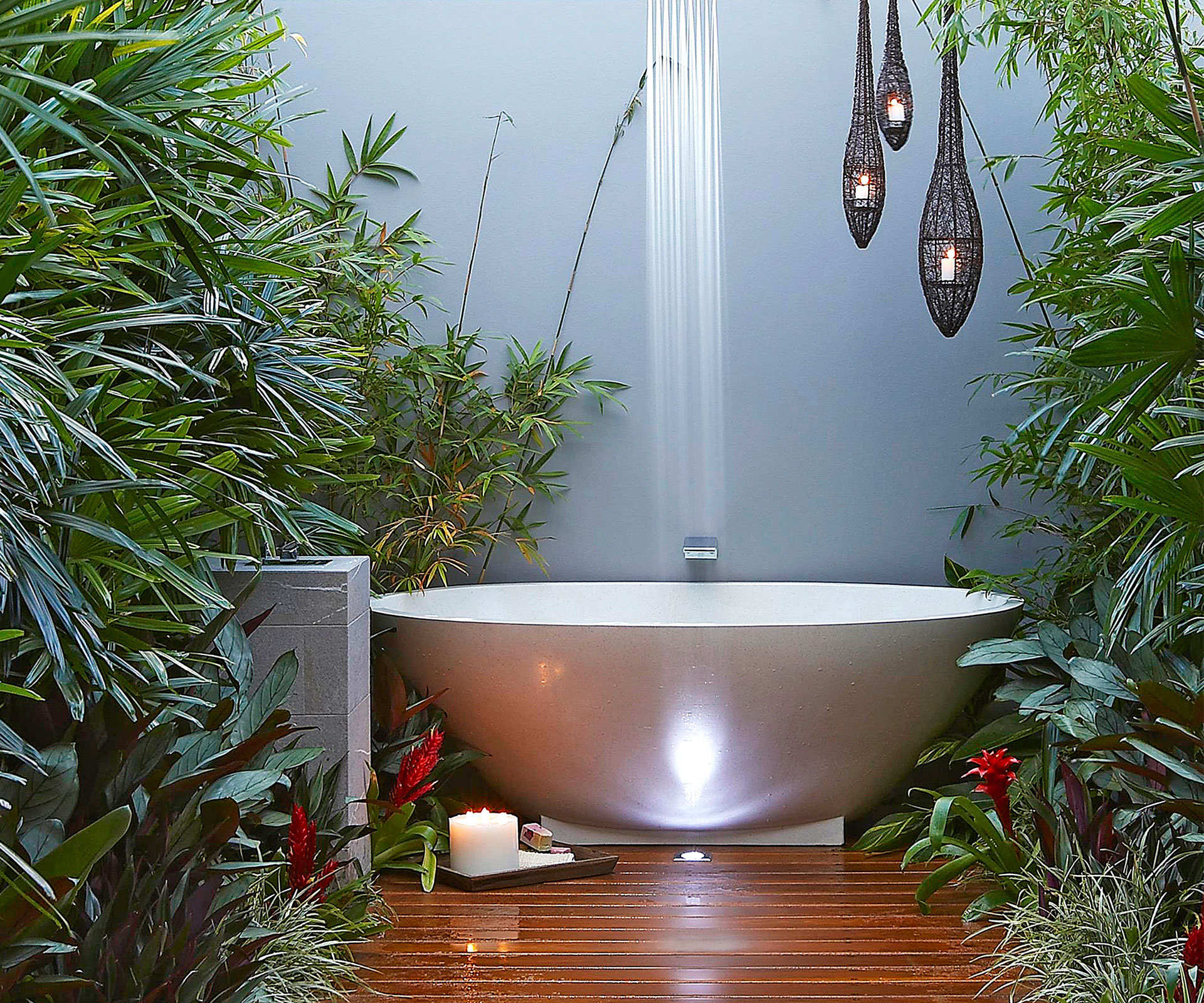The archetypal Kiwi deck used to be for sitting and drinking beer, with workboots chucked in the corner. Now it’s a design statement, created to add impact and style. No workboots allowed…
There’s a very hunky bloke at our local timber yard who knows all about decks – though this is not why we’re building one.
The main reason is that our courtyard/entranceway is currently paved in white, exposed aggregate tiles, which only ever look any good the nanosecond after they’ve been scrubbed with sugar soap, then water-blasted. This makes them another one of those “What was I thinking?!” decisions.
The area in question is used mainly by Certain People as a repository for muddy boots, gardening tools and leftover bags of potting mix. The cats like to dissect their victims there and, when nobody’s looking, the dog sneaks in with her bone and finishes it off at the door.
A revamp will – I am hoping – smarten the whole place up, consequently engendering better behaviour. Visitors will say, “Wow – this is stunning” when they walk in.
When decks first became trendy in New Zealand – please don’t make me say how long ago that was – they were usually long, narrow rectangular protuberances off the side of the house. They were one level with steps down to the grass and no handrails.
Thankfully, styles and materials have changed, hence our visit to the hardware store to choose timber and get some hints. The hunky bloke found us looking at grooved kwila and launched into an impressive commercial for premium pine without grooves. Grooves, he said, would fill up with sand, dirt and water – I could have added blood and mouse entrails, but did not.

Premium pine
This is superior-quality decking timber and competes well against hardwood because of the graded selection it has to go through for this category. If you don’t want grooves, choose timber that’s smooth on both sides, and you might find it easier to match the variations in tone.
Standard pine
The standard or merch grade decking timber is a mid-range, cheaper timber that may distort more over time in comparison to your premium product. It might have bark and resin pockets as well as knots of various kinds. But if you don’t mind a more rustic look, then this should be fine.

These river stones contained in a frame give this smooth decking some character.
Kwila
Kwila always looks very upmarket and fabulous when it’s stacked inside at the timber yard, but it contains a natural resin that will bleed and discolour the timber while it is drying. It’s a very stable and durable timber, which makes it an ideal choice for decks.
Vitex
Vitex (also know as Vasa) is a natural hardwood imported from the Solomon Islands. It’s a good-looking, light walnut brown with a smooth interwoven grain and ages to an attractive silver grey. Its durability makes it ideal for decking in coastal situations.
The Hunk’s advice meant we were leaning towards the premium pine that’s flat on both sides. We laid in a couple of bottles of wine to ensure our design meeting was equally smooth. This deck has no reason for being, other than to look fabulous. So as we talked design – with books, magazines and wine to hand – we decided to keep some of the pavers and add two areas of deck on different levels. A boardwalk of decking timber will link the two levels and keep dirty feet off the pavers. The decking will be stained to match existing areas of timber around the house.
The Partner wanted to incorporate an area for planting around our semicircular pool, and I threw in some more of these areas and some big, white river stones. It may sound like there’s a lot going on here, but deck style now is about mixing materials and levels, and creating a strong design. We don’t plan to have parties in this area, so for once, it’s all about the look.

It’s only natural
If you’re a natural materials snob – I am – you’ll probably sneer at composite decking materials. I used to, but after using some offcuts given to us by friends to lay a floor in our woodshed, I’m almost a convert. That floor has had the worst treatment and it still looks as good as the day it was laid. True, it doesn’t look quite like wood, but nearly!
The alternatives to real timber have various advantages. Depending on your deck design, it can be fast to install and there are ways of joining it so there’s no nailing or drilling holes. It comes in different colours and, even better, it will remain that chosen colour and you don’t have to stain or oil it. It doesn’t warp, you don’t get splinters and spilt red wine can be cleaned off without staining.


